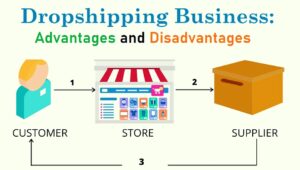Want to start an online or offline clothing store and make your clothing business successful? Follow these 10 steps to successfully start a clothing business and grow sales.

How To Successfully Organize A Clothing Store: A Guide to Success
Organization is an essential aspect when starting any type of venture . Now, if you are specifically looking for how to start a clothing business, these are the 10 steps that you have to follow, whether it is a physical store or an online store:
Selling through a store on the street has the benefit that customers can see and touch the products. But users use digital media more and more—for example, researching brands and products online and then going shopping in person. This is one of the reasons why our advice is to complement your business strategy with an online store . Selling through this medium will allow you to multiply the sales of your premises and reduce fixed expenses .
Here, you will learn how to organize your clothing business successfully and grow sales.
1. Do a market analysis
Carry out a quantitative and qualitative evaluation of a specific market to identify data such as its size, value, competition , entry barriers, customer segmentation and purchasing habits.
2. Study the competitors
Know who your competitors are, we recommend that you analyze the clothing and broadcast advertising techniques they use, to consider them in your own marketing plan.
3. Determine the target audience
The target audience refers to the group of potential consumers that a business is targeting. At this point you have to define age, gender, occupation, location and even the purchasing power of the people to whom you aspire to offer your products or services.
4. Set the budget
To achieve the objectives of your company, it is crucial to define the amount of resources you need for your business to function properly. This study will also help you to think about the most accurate pricing strategies for your clothing brand and make it hit like other fashion brands. If you do not have enough money, then design a plan to find the financing you require.
There are ways to boost your business without increasing costs or even reducing them . One of the most popular? Sell online! By offering your products through an online store, you save fixed costs for rent, employees, cleaning, etc.
5. Choose sales channels
Know your target audience, you can determine which ways you are going to sell to them . The most common sales channels for clothing businesses are:
- online store ,
- social networks,
- marketplaces and
- physical location or showroom .
Next, we will tell you about each of these sales channels.
Online store
The ideal thing for those who want to start selling online without headaches is to choose an e-commerce platform. In general aspects, these platforms work as follows: you pay a fixed value per month and have all the features of an online store available without the need for a programmer or designer.
For example, when you choose to create a clothing cloudstore , you will only have to add your products in the tool and start selling. And the part of means of payment and shipping? All of that is already built into the platform.
Social networks
Facebook, Instagram, TikTok and the most popular social networks are excellent channels to complement the sale of clothing online. Create your company profile in the networks where your target audience is, publish your products and share informative content such as tips on how to use your clothes. In this way, you will captivate your audience and increase your sales. Take advantage of these resources and boost your brand on social networks:
Marketplaces
To start trading on different platforms, you need to create an account on each one, set up your details, and post your products. Keep in mind that in this channel it is important to respond immediately to the queries of potential customers and to know what the policies of the marketplace are in relation to logistics.
Physical premises or showroom
This traditional channel for the sale of clothing has the advantage that customers can go to try on the clothes and meet you personally. However, you have to add the costs of services and rent to your budget.
6. Look for reliable suppliers
Start by searching for potential providers on the internet, including social media. We recommend getting in touch with people who already have experience in the field: ask other stores for advice and visit shopping centers to chat with the shops and get more information.
Investigate the experience of your provider
Before closing a deal with a particular provider, find out who their main customers were and get to know them. You can also hire the supplier and place smaller orders to test their performance. If it meets your expectations, gradually increase the number of orders.
Negotiate deadlines
Deliveries that are delayed might damage your store’s reputation, so before you sign the contract, be explicit about your requirements. Only proceed if you are confident that the provider can fulfil your needs. Finally, make a contract to formalize the agreed points.
Pay attention to payment terms
The payment method that you define with your provider is also important. How will the payment be? And the term? In addition to the quality of the product, it is also important that you choose a supplier that can offer the best benefits for you and your store.
7. Consider producing your own products
At first, working with a provider may be the best option. However, as time passes and your business becomes financially stable, it may be time to go a step further and start producing your own products to sell.
8. Define the type of stock of your store
There are various types of stock for an online store: own stock , third-party stock , dropshipping , among others. It will be up to you to analyze the advantages and disadvantages of each modality and decide which one best suits your business.
At first, consigned stock may be the best alternative. You will have a lower profit margin but you will be able to save space, since in this type of stock the products are kept by the supplier. Thus, you avoid the risks and expenses of having to maintain a physical location and promote idle merchandise (which sells little).
In the future, your own stock may be the best option, since it will allow you absolute control over the products and you will be able to speed up delivery times. It is essential that you begin to verify your product idea and plan stock management .
9. Display clothes attractively
When thinking about how to organize a clothing store, everything related to the display of garments takes center stage. Both in the online and offline world, seeing a harmonious store invites purchase. To organize clothes in a store like an expert, we suggest:
Set colors and combinations strategically
You can use the typical colors according to the time of year and remember to mix patterned and solid colored garments to avoid overloading or boring.
Sort the clothes
Do it by color and size in the case of physical stores and take advantage of the filters in virtual businesses.
Put together complete looks
This strategy allows you to promote cross selling actions , that is, offer the consumer products related to the item they want to buy. If the client is looking for a sweatshirt and you show it with jeans and sneakers, it is possible that they will buy all 3 items instead of one.
Get attention with a promotion or a new product
If you have a physical location, use the main window of the store to attract customers; in the case of a sales website , do it in a banner on the home page.
Write good product descriptions
In the offline version of your business, make sure that the label has as much information as possible about size, type of fabric, price, etc.; In your online store you have to detail the same data on the product page.
Show how the clothes are on
In your store or showroom you can use mannequins; Meanwhile, in your virtual store you have to publish excellent photos of products and, if possible, hire human models.
10. Promote the store (marketing actions)
The last tip on how to organize a clothing store is to invest in promoting your brand. From organic and paid posts on social networks to classic billboard advertising, all formats that relate to your target audience are valid.
Having an online store also gives you more room to implement advertising strategies focused directly on your target audience and take them to your website. Thus, more and more people visit your clothing store, you get more and more sales.





